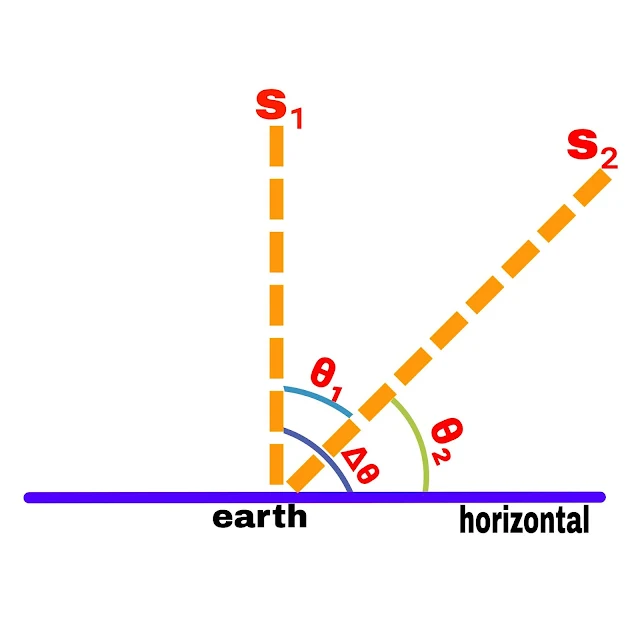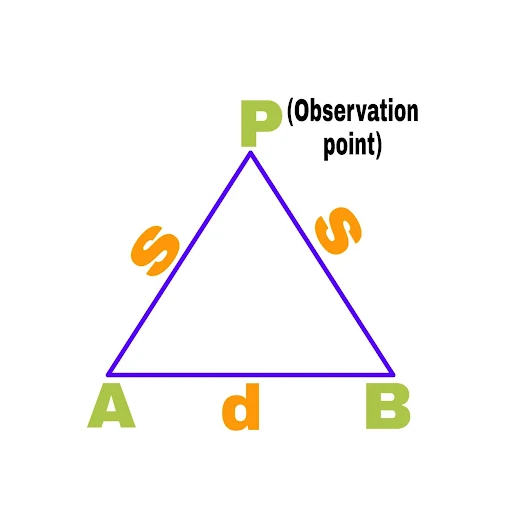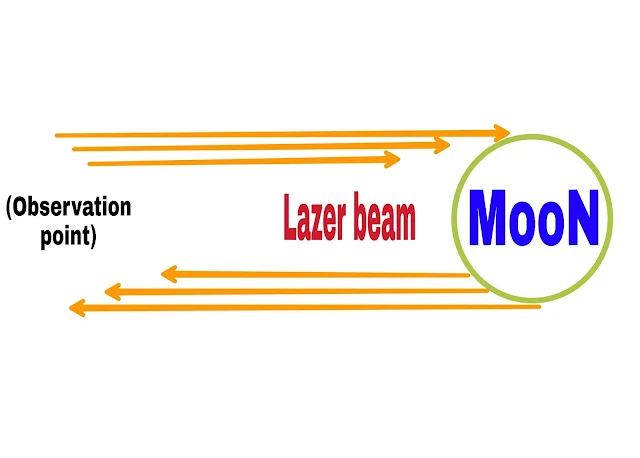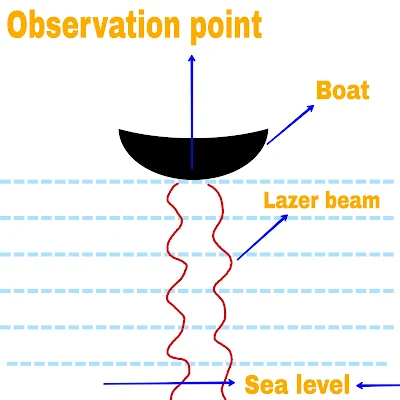Physical Quantities
All the quantities which are related to any physical phenomena and can be represented by a number and can be measured directly and indirectly are called physical quantities.
Example- Length, mass, temperature, speed, force, time etc.
There are two types of physical quantities
1. Basic quantities
Those physical quantities which are not made up of any other physical quantities are called basic quantities.
- Length
- Mass
- Time
- Heat
- Electric current
- Light intensity
- Amount of substance
Basic units
Units of basic quantities are known as basic units.
Basic quantities_______Basic units
Length_________________ Meter
Mass____________________Kg
Time____________________Seconds
Temperature____________Kelvin
Electric current_________ Ampere
Light intensity___________Candela
Amount of substance____Mol
2. Derived quantities
Those quantities which are made up of basic quantities are called derived quantities.
Example -
velocity=displacement/time
Unit=meter/second
Volume=length×width×height
Unit=meter×meter×meter=meter³
Density=Mass/Volume
Unit = Kilogram/Meter³
Force=mass×acceleration
Unit=kg×change in velocity/time
=kg×meter/second²
=newton
Measurement of length
Optical microscope is used to measure very small distances but it also has some limitations. Because visible light with wavelength range of 4000A° to 7800A° is used in optical microscope.
Therefore, the optical microscope can measure only particles of size on the order of 10⁻⁶ meters. To measure particles smaller than this, an electron beam is used instead of a light beam in an electron microscope. In this case, particles of the order of 1A° can be measured.
Determining the radius of an atom using Avogadro's imagination
According to these,
There are 6.023×10²³ atoms in 1 gram of the substance.
Which occupy about 2/3 of the volume of the substance.
Let the mass of the substance be m, the weight of the atom of the substance be M, the volume occupied by the atom be V, the radius of the atom be r and Avogadro number be N.
Therefore, number of atoms in gram substance = N/M
Therefore, number of atoms in m grams of substance = m(N/M)
Since the volume occupied by 1 atom
=4/3.πr³
Therefore, the volume occupied by all the atoms of the substance
m(N/M).4/3πr³
Since atoms occupy 2/3 of the volume of matter
so,
m(N/M).4/3πr³=2/3V
m(N/M).2πr³=V
m(N)2πr³=MV
r³=MV/2mN
With the help of the formula, the radius of the atom can be measured, whose value is of the order of about 10⁻¹⁰ meters.
Determination of molecular diameter
In this method, the thinnest film of oleic acid in water is made. The thickness of the film is considered equal to the molecular diameter. For this, 1 cm³ of oleic acid is dissolved in 20 cm³ of alcohol. Again by taking 1 cm³ volume of this solution, 20 cm³ alcohol is obtained.
Hence the concentration of the solution,
C=1/20×20
C=1/400 cm³
Now take a few drops of this solution and pour it over water filled in a flat and wide tray.
It means that no drops of this solution are put on the surface of water.
Burn the film of oleic acid again. Spread the pages carefully. Over time the alcohol evaporates.
Whereas only the film of oleic acid remains. The area of this film is measured with the help of tracing paper and graph paper.
Let the volume of each bundle be V equal³.
Then the volume of n drops in the solution,
nV cm³
Therefore, the amount of oleic acid in the solution,
nV/400 cm³_______(1)
If the thickness of the film is t and the area of the film is A, then the volume of oleic acid is,
A.t______(2)
Hence from equation (1) and (2)
At=nV/400
t=nV/400A
If the film thickness is only one molecular diameter, then the molecular diameter can be determined by finding the film thickness from the above formula.
Measurement of large distances
Angular displacement is used to measure large distances like the distance of a star from the Earth, the distance from the Moon to the Earth, etc. That is, angular measurements are helpful in measuring these distances.

With the help of telescope, the angles of elevation θ₁ and θ₂ of two stars S₁ and S₂ are determined.
Hence the angular distance between S₁ and S₂
∆θ=θ₂-θ1₁
Size of celestial bodies (Diameter of the Moon)

Let P be the observation point on Earth. If the Moon is seen through a telescope, the image of the Moon is formed like a circular disk. If the angle subtended by the diameter AB of the moon at P is θ, then
θ=AB/s
Where s is the mean distance of the Moon from the Earth.
Therefore,
AB=θ.s
D=θ.s
Echo method or reflective method

The sound coming from a distant hill directly after the reflector is called echo.
By this method the distance of the hill is determined. For this the sound is released towards the hill. And we find out the gap between the rods between releasing the sound and hearing the echo.
If this time is t and the speed of sound is v, then the distance of the hill is s.
v=2s/t
2s=vt
s=vt/2
Laser method to find the distance of the Moon from the Earth
Laser means: Amplification of light by stimulated emission of the radiation.
This method is based on reflection of light. It is very intense monochromatic and monochromatic light. To find the distance of the Moon from the Earth, the beam is directed from the observation point towards the Moon.
After being reflected from the Moon it returns back to Earth. The time of travel and arrival of the laser beam from Earth to the Moon is noted.

If the distance of the moon from Earth is to go to the moon and coming to the moon and the light of the light and the velocity of the light,
s+s=2s
2s=ct
s=ct/2
Laser method to measure depth of sea
If the depth of the sea from the observation point is d and the time taken by the laser beam to reach and return to the depth of the sea, then
d=ct/2
The depth of the tunnel is also determined by this method.
Measurement of mass
When an external force is applied on an object, this force tries to change the state of the object.
The property of an object due to which it resists change of state is called inertia. In physics, the mass of an object is the measure of inertia. If the mass of the object is more then the inertia will also be more.
If force F acting on an object of mass m produces acceleration a in the object, then the force,
F=m.a
The mass of the objects determined in this way is the measure of the inertia of those objects, hence it is called inertial mass.
Inertial mass
The inertial mass of an object can be determined from an inertial balance. This balance consists of a wooden block and a palra which are connected to two flat metal leaves and their flat ends remain vertical.
The length of the Earth (outside the scale) depends on the Young's elastic coefficient of the material and the total mass of the leaf and the object placed on it.
Gravitational mass
We know that the weight of an object is directly proportional to its mass.
Considered weight
w∝m
If the weights of two objects at the same place are w₁ and w₂ respectively and their masses are m₁ and m₂ respectively, then
w₁/w₂=m₁/m₂
Note-
Gravitational mass is determined from a spring balance. If the mass of the object is m and the tension in the spring is x, then
m∝x
If the masses of two objects hanging from a spring balance are m₁ and m₂ respectively and the stretch is x₁ and x₂, then
m₁/m₂=x₁/x₂
(Mass and weight are different physical quantities. Mass is a scalar quantity while weight is a scalar quantity.)
measurement of time
Following are some methods of time
Solar clock
It is based on the regular rotation of the Earth the passage of the Sun. Earth's rotation around its axis varies slightly from day to day and year to year. Therefore the accuracy of the mean solar second is questionable.
Atomic clock
Atomic clock is based on periodic vibrations occurring in atoms. The first cesium particle was made in 1964. Their accuracy is 1 second in 10¹¹ seconds.
That is, one second is the time interval in which the cesium atom vibrates 10¹¹ times.
Decay of fundamental particles
The half-life of non-permanent fundamental particles ranges from 10⁻¹⁶ sec to 10⁻²⁴ sec.
In the experiments conducted for decay processes, very short time intervals can be measured.
Radioactive dating
It is used to measure long time intervals of the order of 10⁻¹⁷ sec. The age of fossils, rocks, earth etc. is determined by this method. C-14 is used in radioactive dating.
Quartz crystal watch
This pressure demonstrates the phenomenon of electrical effect. The accuracy of these clocks is 1 sec in 10⁹ sec.


0 Comments
Post a Comment